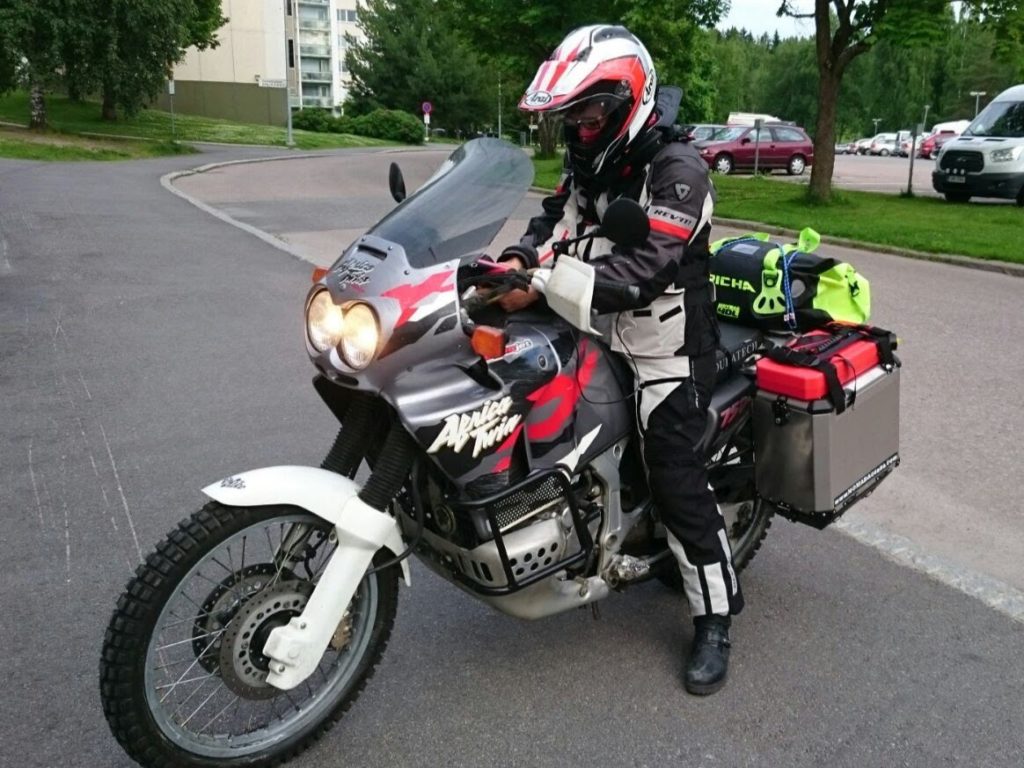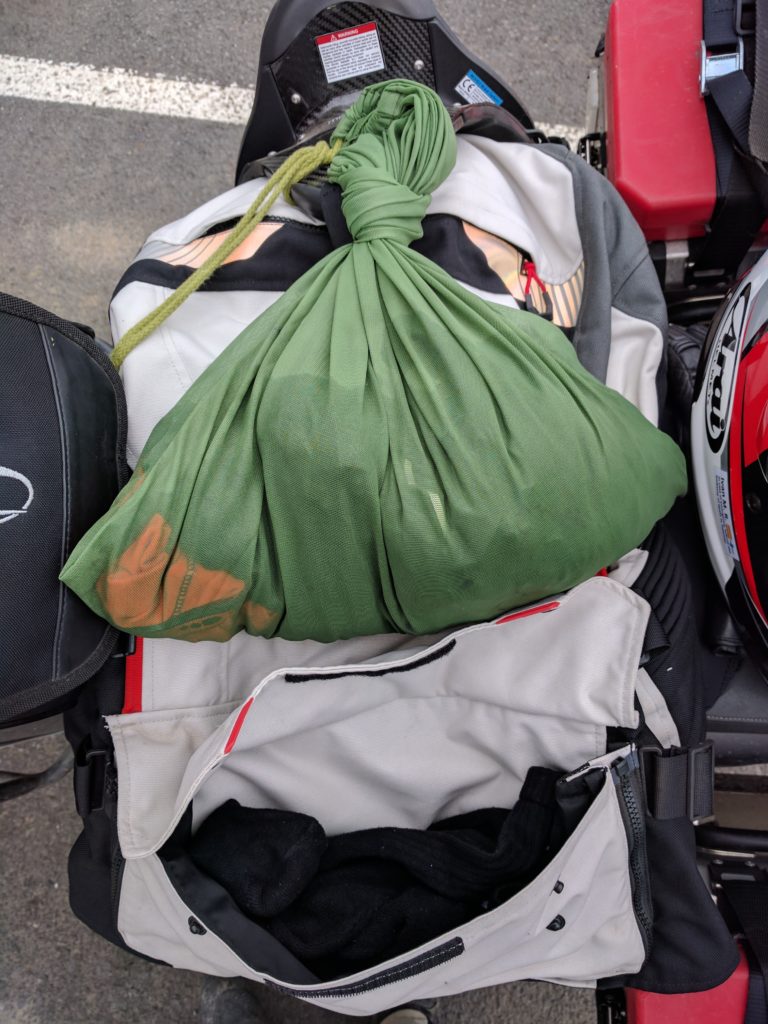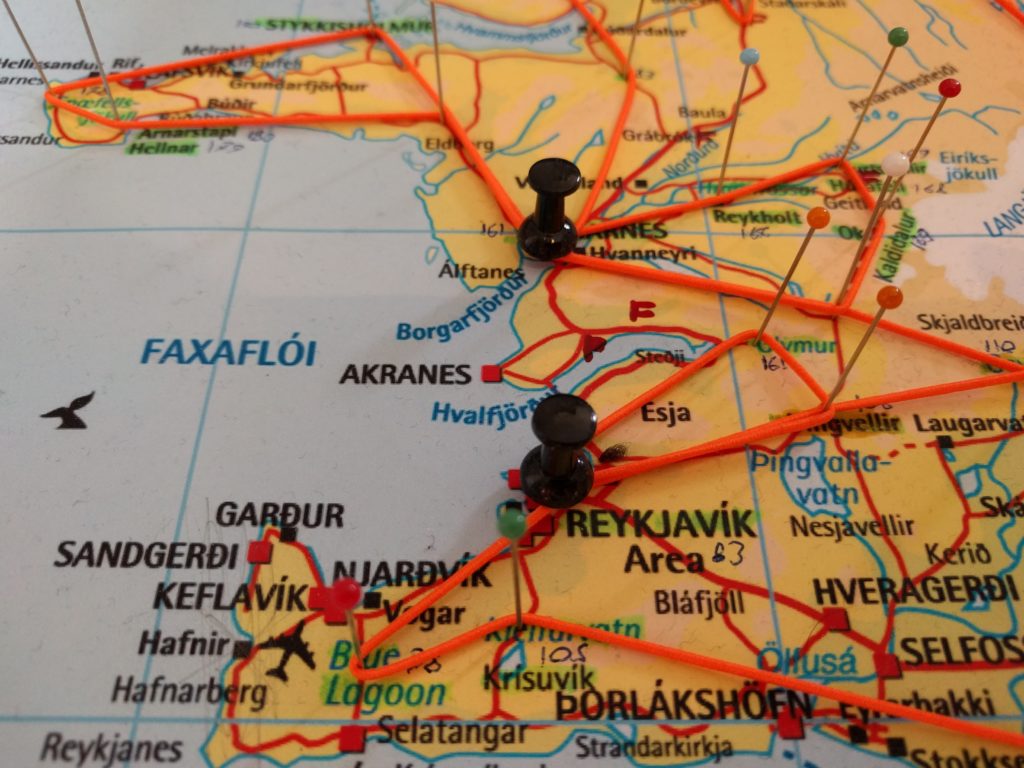Day 7 (13.7) – Seyðisfjörður to Húsavík
The ferry arrived to its final destination in Seyðisfjörður in the morning. Customs just asked how long I was planning to stay and put a sticker in the windshield of the bike. I shall write about the town when I tell you about my last day in the country; that day I just had to get going.
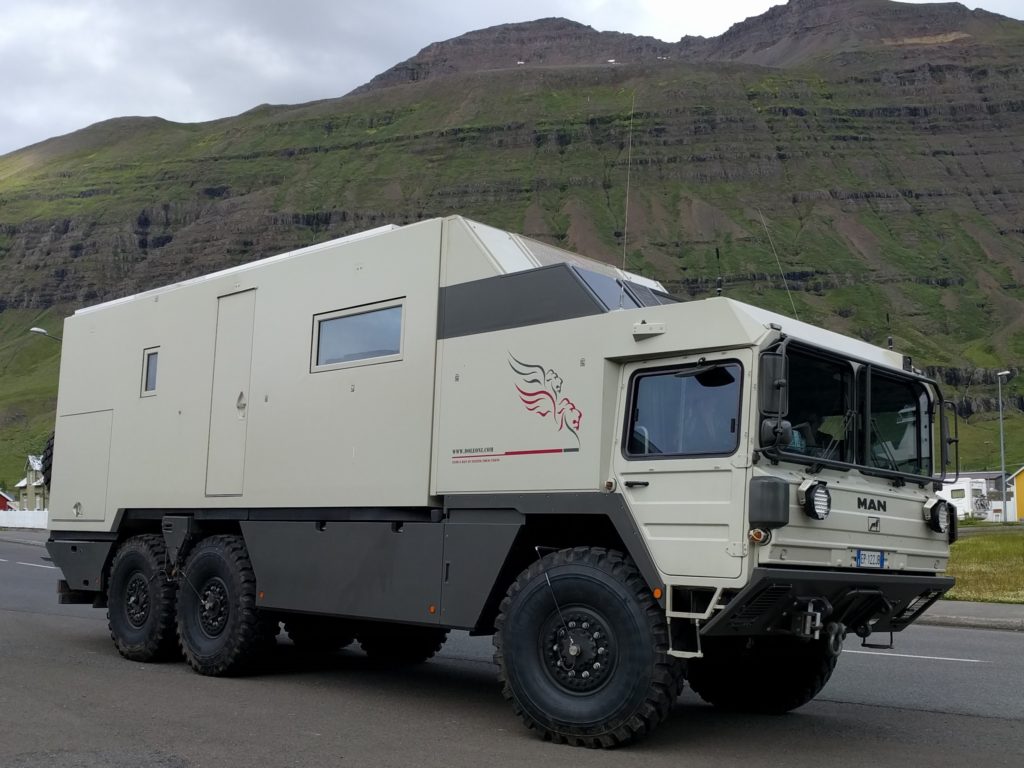
One thing that caught my eye is this MAN KAT1 truck that also disembarked. This one is unique and has a luxury interior, you can see it here. It made me dream of traveling in a off-road truck, maybe when I retire.
Leaving Seyðisfjörður you reach Egilsstaðir, a good place to get provisions. I bought a road map for 17.5 € and groceries for 25.2 €. I also spent 43.2 € in gasoline. I filled the motorcycle tank and the empty Rotopax cans.
It was raining and cold, so I also put the Gore-Tex layer of my jacket and trousers in the toilet of the gas station. It was difficult to prevent my clothes from touching the dirty wet floor.
All set, I took the Ring Road north and then F88 south. The F88 is a fun road of black sand and stones that goes through a beautiful area of petrified lava. It was cold, it never stopped raining and I hardly crossed any other vehicle.
My plan was to spend the first night in Sigurðarskáli; and visit the ice caves of Kverkfjöll, Askja caldera and Herðubreið the following day. But when I came across the first river crossing, I thought it was wiser to turn around. You can see the conditions of the river and the weather, and part of my route back north, in the video below.
You may argue that river can be crossed in a motorbike. But bear in mind that I didn’t have any experience, the conditions were bad, and if I got in trouble it looked like I wouldn’t get help in hours. I thought of the high risk of ruining a trip that cost me a lot of time and money to prepare, the very first day. I still think I took the right decision.
Later in the trip I crossed many other rivers. Now I think I could easily cross that one. I would definitely try if I weren’t alone. One of a hundred reasons to go back to Iceland, some day.
Anyway, I went to visit Hverir Geothermal Area and then went to Húsavík, where I booked a whale-watching tour and was going to stay the following two nights.
Day 8 (14.7) – Húsavík and Jökulsárgljúfur
I stayed in Húsavík Campground. To be honest, the facilities were quite bad. The showers just had a few hooks to leave your clothes and the floor was dirty with the outside mud (Some people took their shoes inside the shower room instead of leaving them outside). The eating room had a few chairs, half of them broken. At least they had a very convenient heated room to dry your clothes, I give them that. But unless you are traveling in a caravan with all the facilities, I would avoid this campsite.
Most Icelandic campsites don’t have an office, someone passes by collecting payments in the morning and afternoon. It would become my routine to arrive in the evening and pay the following morning. This one costed 19 € for two nights. There is a Camping Card, but not for every campsite and definitely not worthy for the amount of nights I would use it. However, I got the impression that campsites that accept the Camping Card have good facilities, so it’s a good reference.
That morning I went on the whale-watching tour that I booked the previous day. I had a coffee while waiting for the ship (2 €). The tour costed 82 € but it was worthy. We were extremely lucky to see a whale breaching, very rare in cold waters.
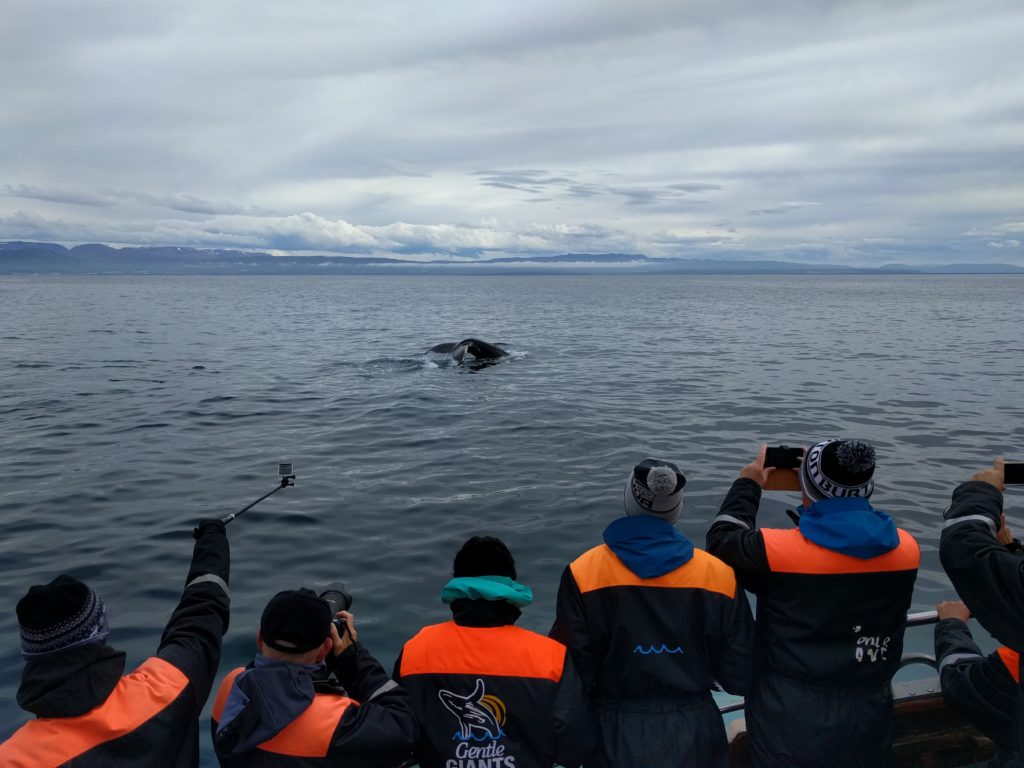
After that I took the bike to do road 862 south. 862 is a nice challenging road full of potholes and probably ponds after raining. The views were great. The picture below was taking in this location.
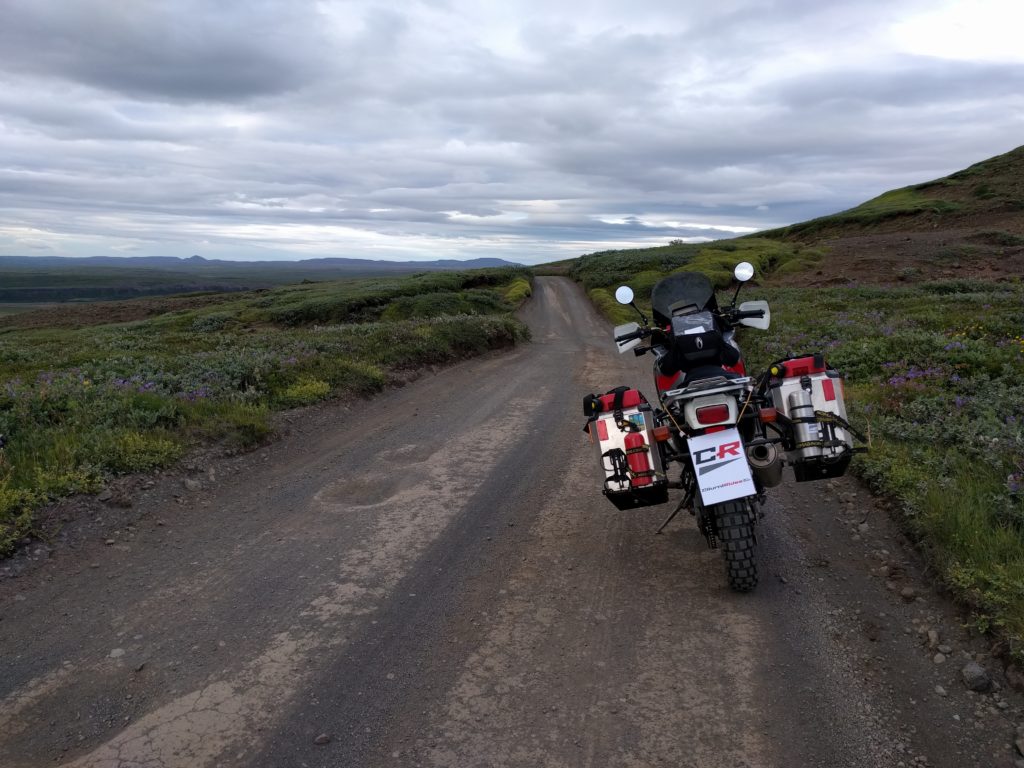
I must confess that my morale was low that day. I missed important sights the previous day, the weather was always bad, the campsite disappointing… I had a difficult entry to the country and I was regretting I came. But in Jökulsárgljúfur, I started to realize what Iceland has to offer.
I don’t want to waste time with long descriptions of the sights when you can find plenty of information, images and videos in the Internet. But whatever you may read or see, can’t compare with being there and seeing it for yourself.
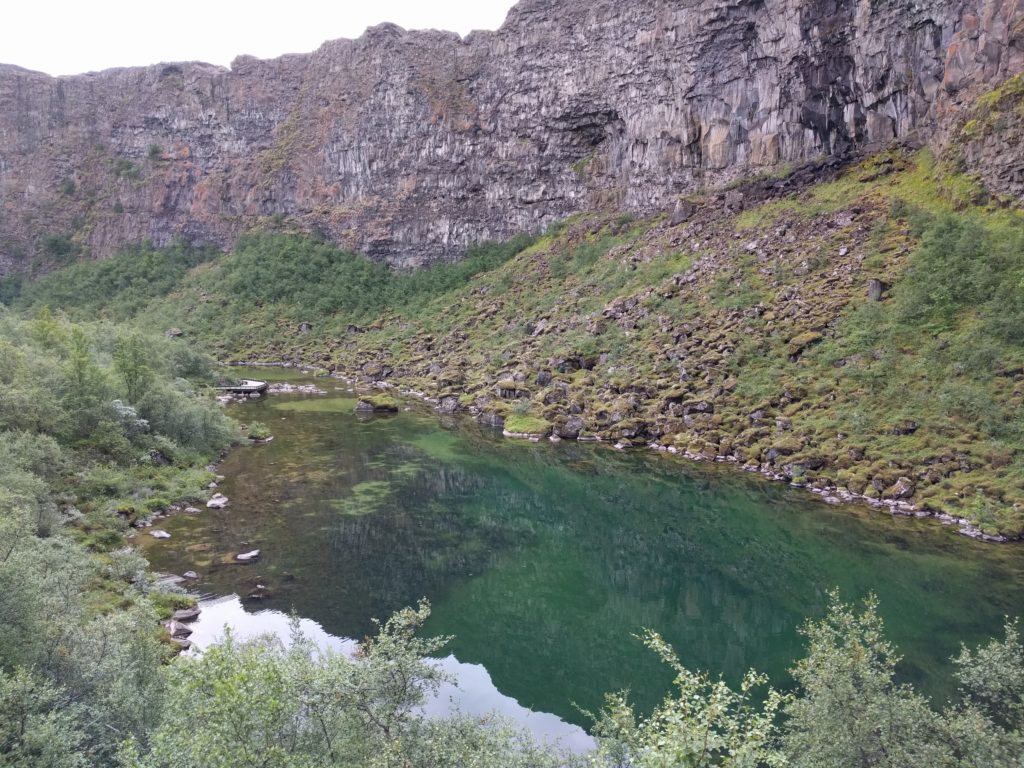
My first stop was Ásbyrgi, a beautiful canyon with a pristine river and gorgeous vegetation. There is a campsite right there. There are other campsites in amazing locations in Jökulsárgljúfur.
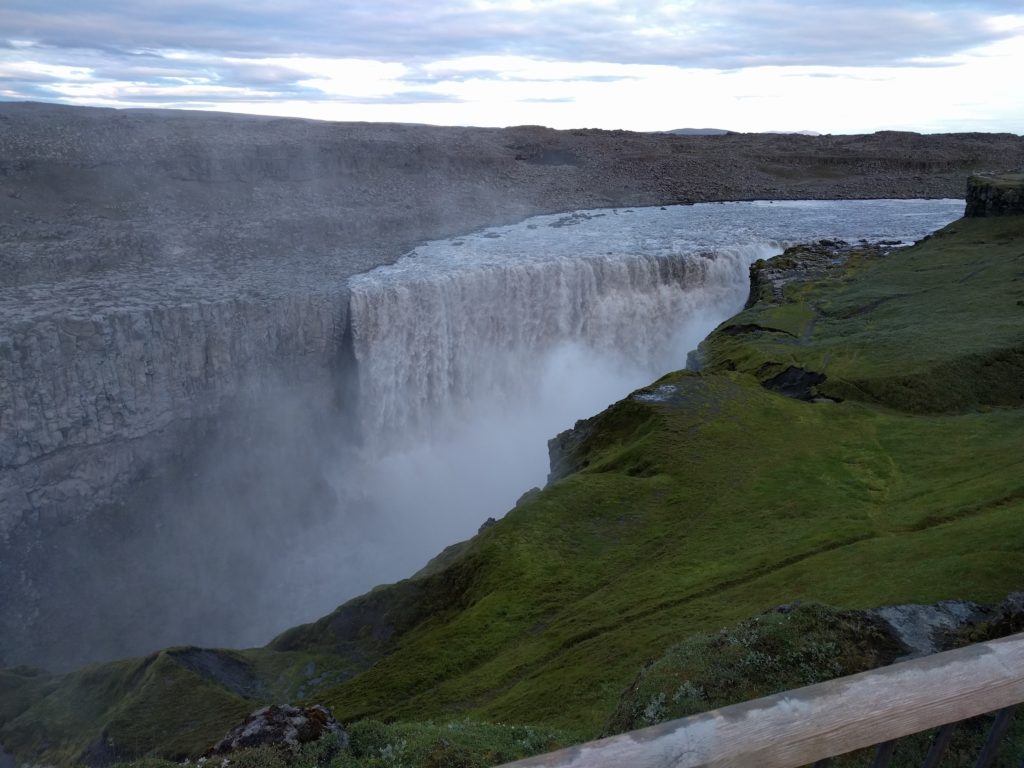
I’m only going to tell you one thing about Dettifoss: It turned out to be the best, most spectacular sight of my entire trip. After reaching the south end of the road I went back to spend my last night in Húsavík.
By the way, it was that day in road 862 when I lost a pannier for the first time. Back in Húsavík, I got a Vodafone data SIM card (14.5 €) that I should have bought the previous day in Egilsstaðir.
Day 9 (15.7) – Húsavík to Sauðárkrókur
You see, I made quite a detailed plan of the route I was going to follow. Accordingly to that plan, from Húsavík I was going to do the Sprengisandur route (F26) south. The F88 showed me that I had underestimated the difficulty of river crossings, so I double checked the F26. I came to the conclusion that it was way too much for my skills. I wonder if the entire route can be done in a motorcycle, actually. I had to redo all my plans in a way that I still used the accommodation bookings I had. I would later learn that the weather can ruin your plans too.
Things can always go wrong and you have to adapt and improvise. That morning I stepped on my glasses while I was looking for them inside my tent. One glass cracked but still stayed in place, and I had the prescription sunglasses if the sun showed up some day. I later noticed that my tent has pockets in the corners.
Anyway, I picked my tent, filled the tank with 14.5 €, and I was on the move again. Until then, I had been filling the tank with the gasoline from the panniers as soon as I could. Better keep the cans empty if you don’t need them.
First I went to Krafla. I think the main sight there is Víti crater, but instead of that I want to show you the shower of thermal water that stands here, in the middle of nowhere. Somebody actually came by car, took a shower and continued her trip.
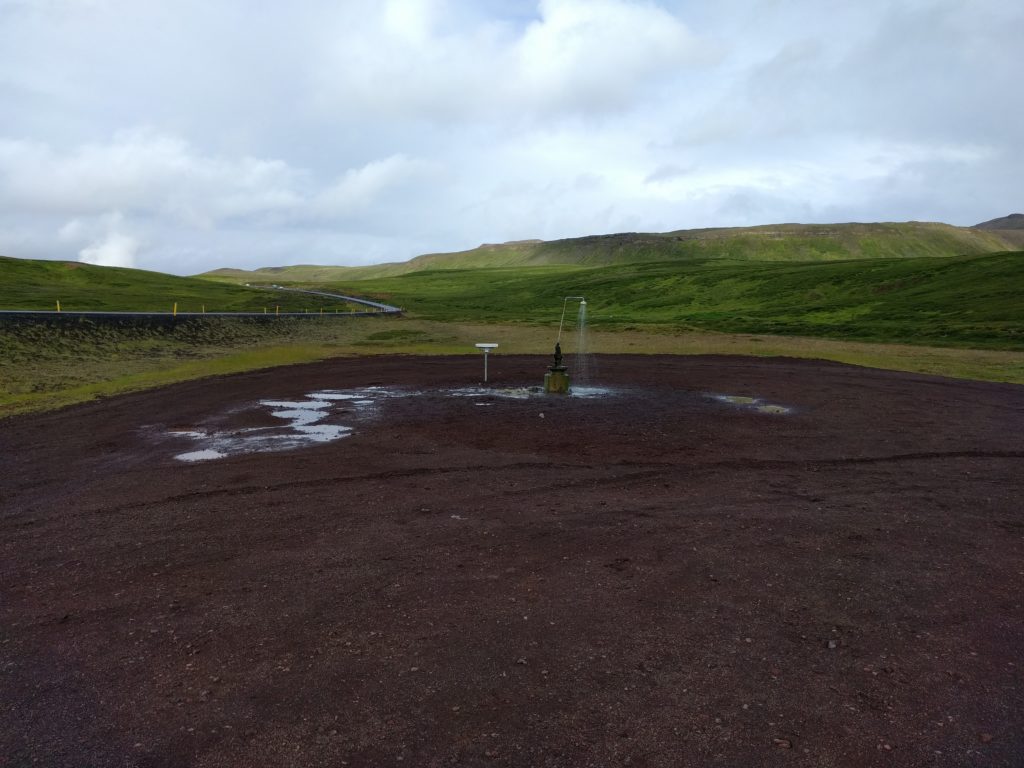
If you want to see what Mývatn has to show, go around by the southern road 848. That’s the next thing I did, and I took the picture below in this location.
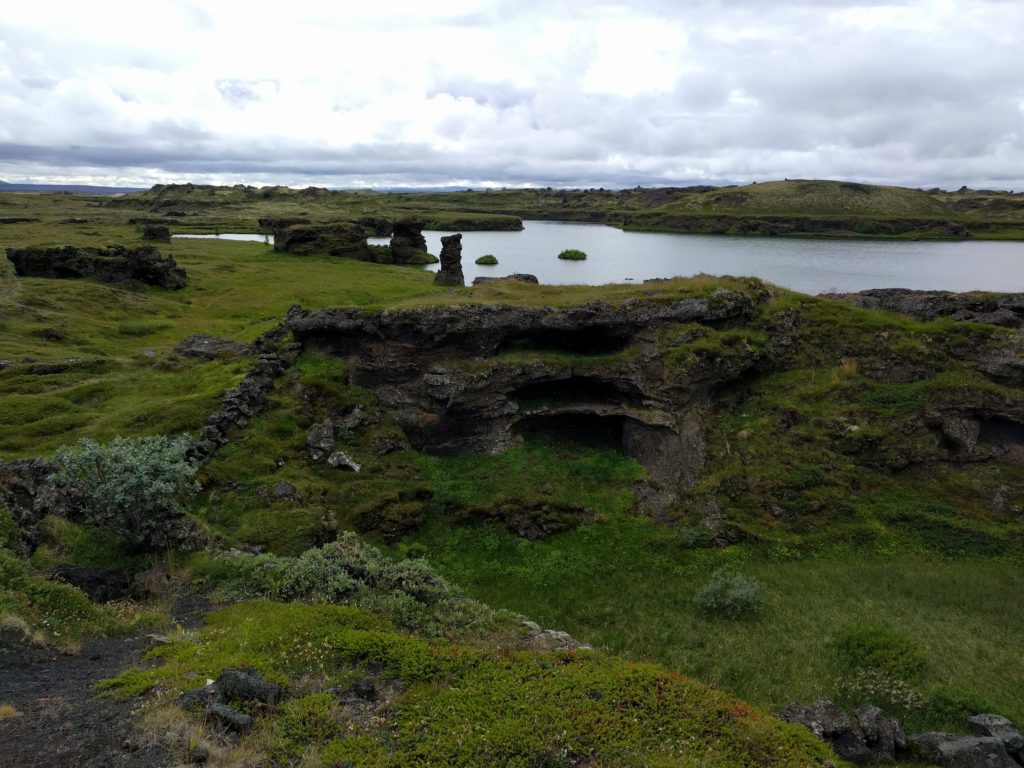
Then I made a stop at Goðafoss waterfall and continued west in the Ring Road through Öxnadalur valley, where the road is dull but the views are great. The picture below was taken in this location.
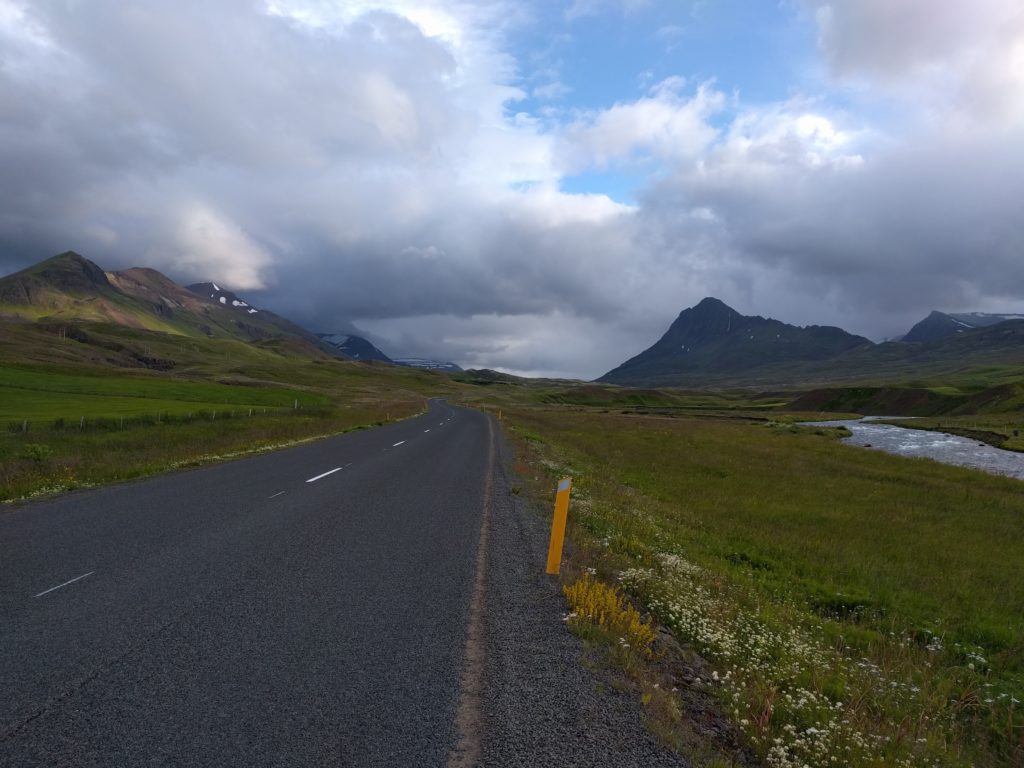
Somewhere along the route I had lunch and ice cream for 35 €. The meals I don’t mention, it’s because I just made a sandwich with the things I bought at a supermarket, which was usually the case.
Finally I arrived to Sauðárkrókur, where I filled the tank again with 20.2 € and was going to stay two nights.
Day 10 (16.7) – Tröllaskagi
The camping in Sauðárkrókur only has toilets and showers, but at least they are new and good. It costed 19.2 € for two nights, plus 4 € for using the showers twice. In most Icelandic campsites you pay extra to have a limited time of warm water in the shower.
That morning I spent 11.3 € in groceries and off I went. The plan was to go around Tröllaskagi peninsula. I didn’t visit any special sight but the route and the landscape were epic.
I first went around in road 76. Parts of the road didn’t have asphalt and even had potholes, like in the picture below taken in this location. This uses to be the case in Iceland, secondary roads with different surfaces depending on the part.
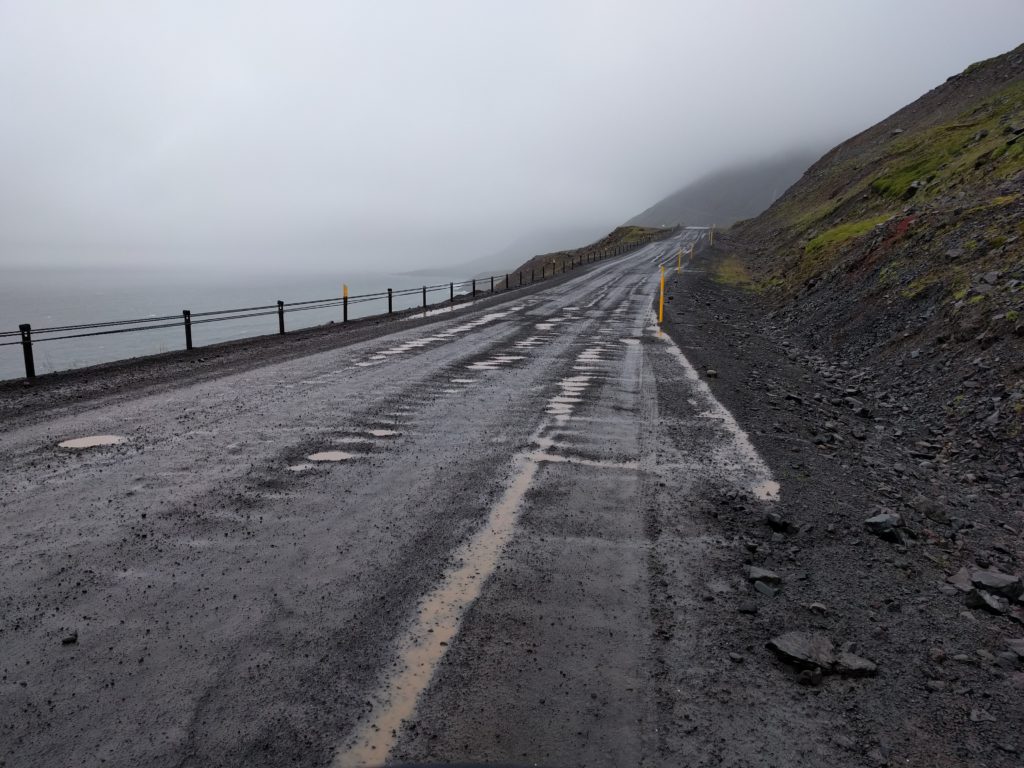
I stopped in this place to have a coffee and a sandwich for 9.2 €. I totally recommend it. After that I took the tunnels to Ólafsfjörður and from there I took roads 802 and 82 west back to road 76. You may notice that for Google Maps that is not road 82, but accordingly to my road map and the Lonely Planet guide, it is.
802 and 82 are dirt roads with pot holes. Not that challenging, but the mountain pass of 82 was spectacular. Notice the birds flying in front of me at the end of the video. I don’t really know the reason of their behaviour, but I think they were acting as bait to lead me far from their nests. Many Icelandic birds nest on the ground due to the lack of trees, and they can be very aggressive if you approach theirs nests.
After these, I just took 76 back to Sauðárkrókur. It was cold and raining all day. The Gore-Tex layer did its job, but when I arrived to the campsite my gear was soaking wet. I had to go straight to sit on the radiator of the toilets until I stopped shaking. That was my first lesson in how bad the conditions can be in Iceland, but it wouldn’t be neither the last nor the toughest.
Day 11 (17.7) – Sauðárkrókur to Stykkishólmsbær
I picked my tent again and continued west, after filling the tank with 13.6 €. I went around Vatnsnes peninsula, taking roads 716, 717 and 711. They are good dirt roads with some gravel and potholes. The peninsula has many nice sights, like the remains of a fortress on top of the hill of the picture below, taken in this location.
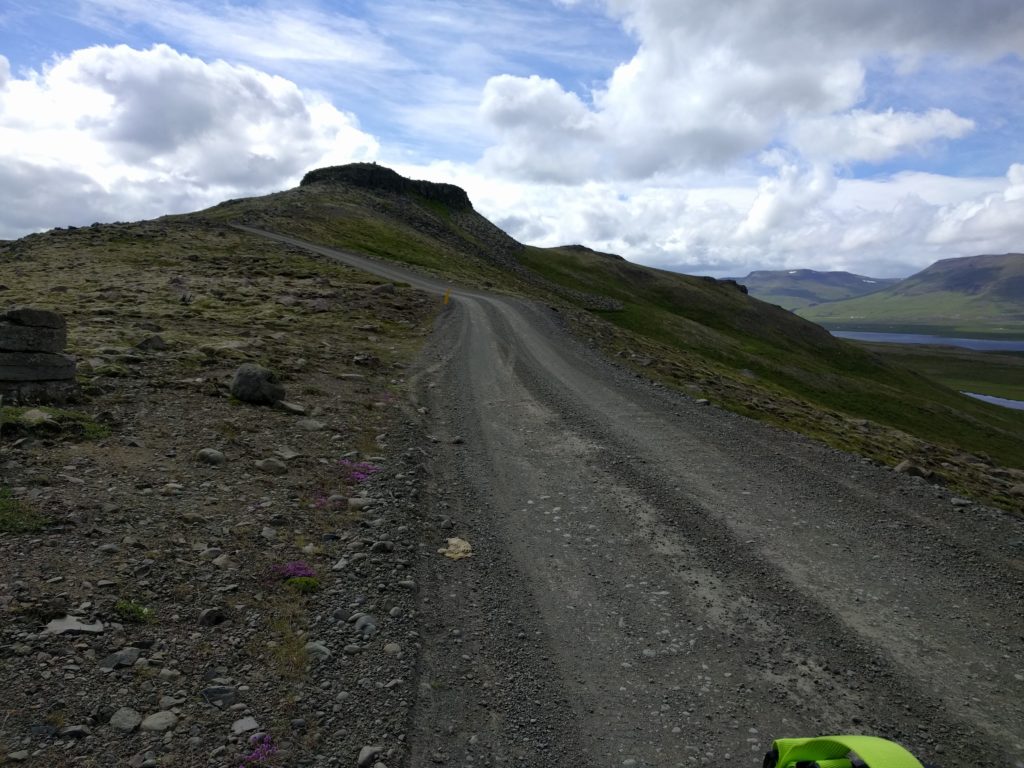
I made a stop in this location and between the uneven terrain and the strong wind, the bike ended as in the picture below. I was removing the luggage to be able to pick the bike up when some cars came and I stopped them for help. They saw my broken glasses and it took me a while to convince them that I didn’t have an accident and I was fine.
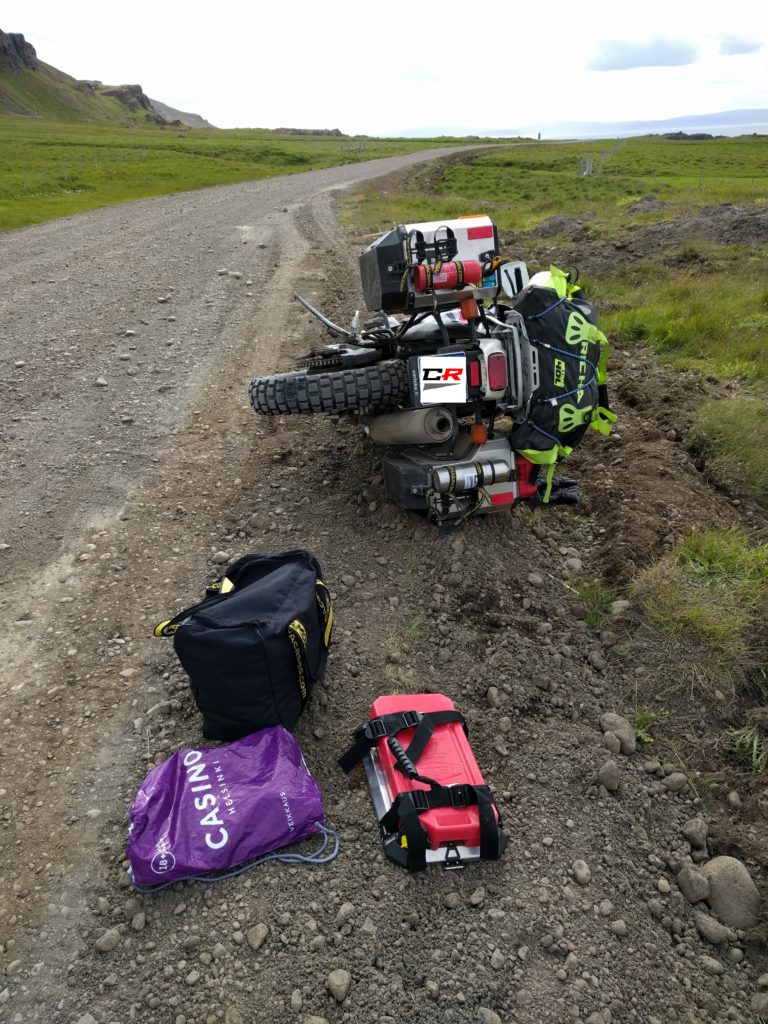
I made a stop at this station where I filled the tank again with 12.9 € and had a vegan burger for 14.7 €. N1 gas stations usually have good services. Then I went south to take road F586 west.
I think road F586 is a hidden gem of Icelandic off-road driving. It goes through mountains like 82; but it’s narrower, bumpier, curlier, more steep, and you get to cross a narrow river several times. If you are a rookie like me, it’s one of the first roads you should do: it will challenge you without putting you in trouble. Regardless of your experience, it’s the second best road I did in Iceland. I had a video but it seems I accidentally deleted it when freeing space in the memory card. So, unfortunately, I can only show you the turf house in this location.
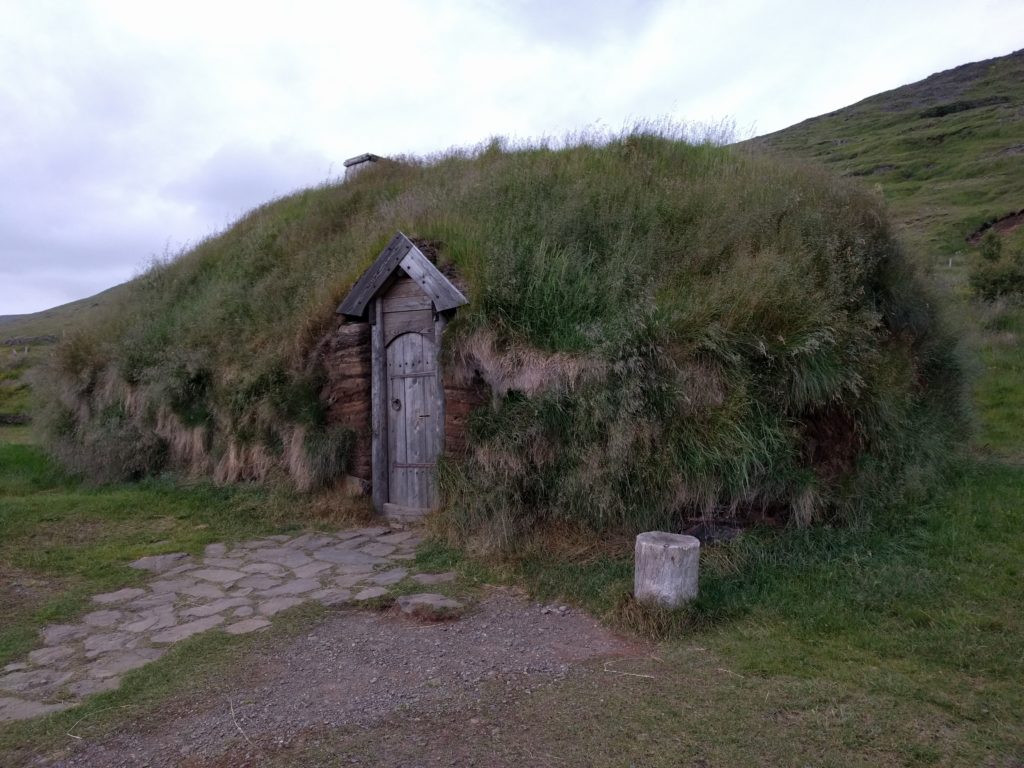
To get into road F586 from the Ring Road, you need to cross a gate. Make sure you leave it closed behind you. The reason for the gate and its fence is the sheep that roam freely in most of the country. Be extra-careful with them: the lack of predators hasn’t made them most cunning or agile animal on earth. For some reason they like to be on the roads; and they have unpredictable reactions or not react at all when you get really close. It’s not rare that they stand in one side of the road and cross in front of you at the very last moment.
I continued west through road 54, which was a good dirt road. The views of the coast were great, like the picture below that I took in this location.
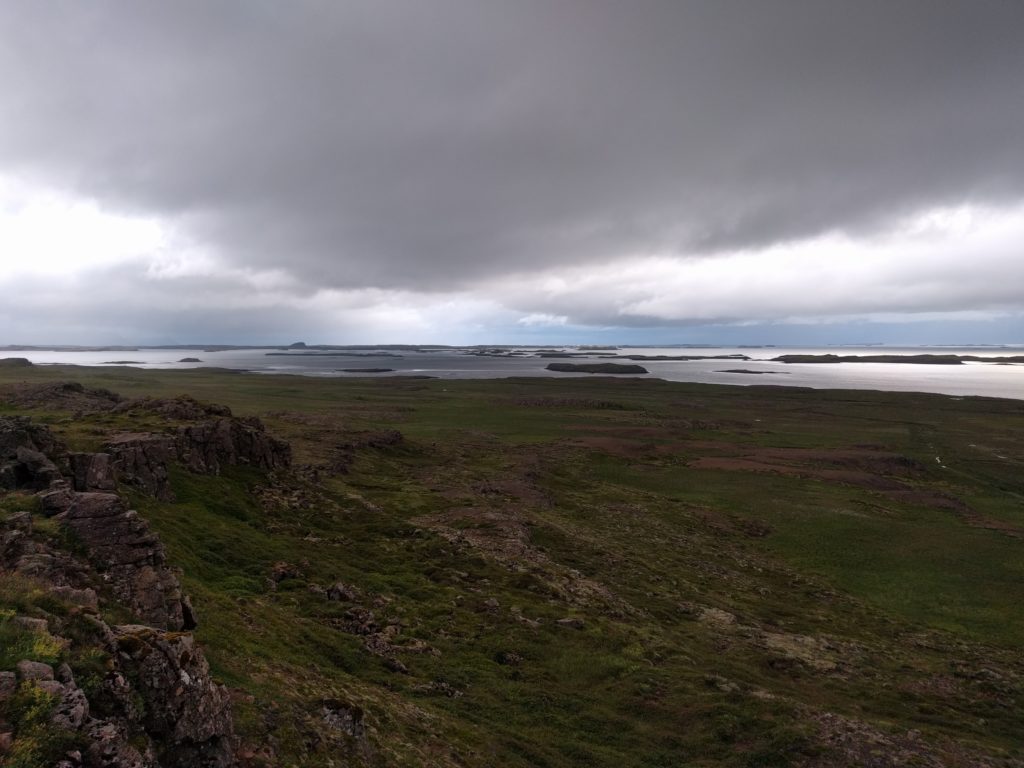
I spent the night in Stykkishólmur, from where I started the western part of my trip.

